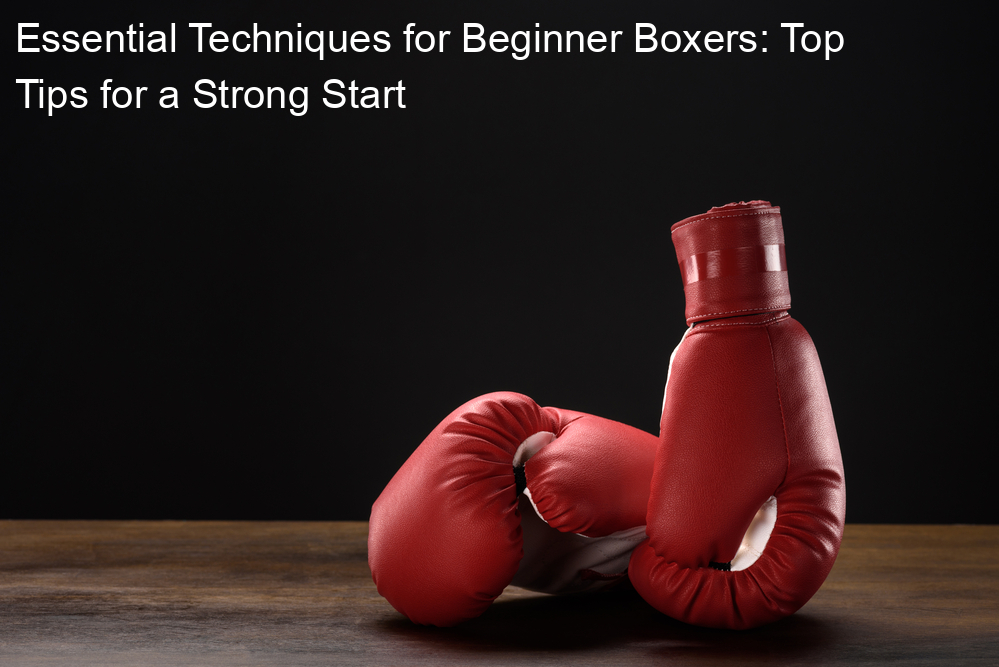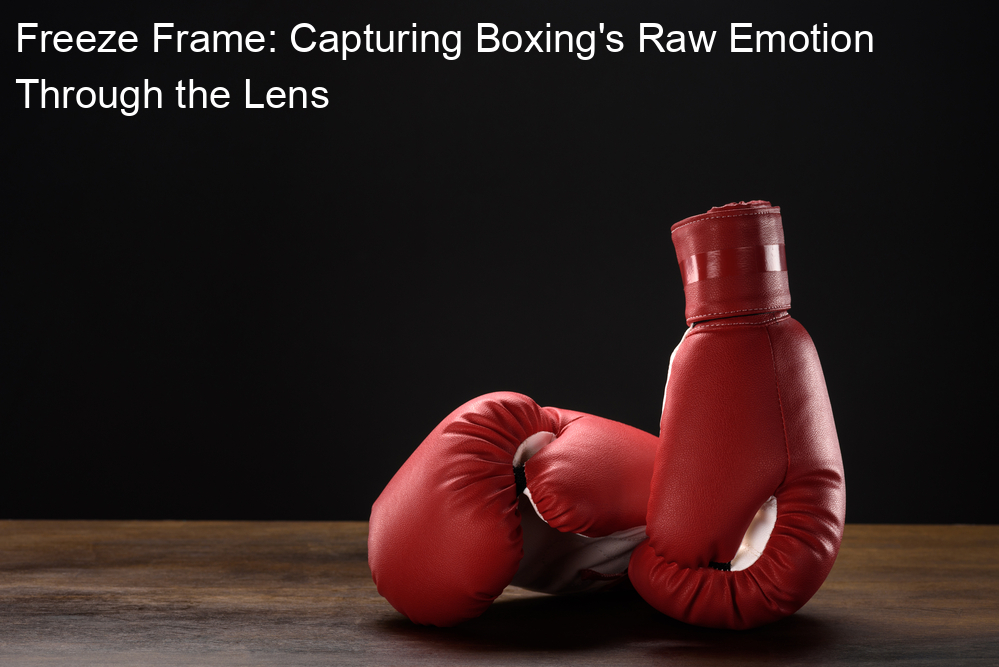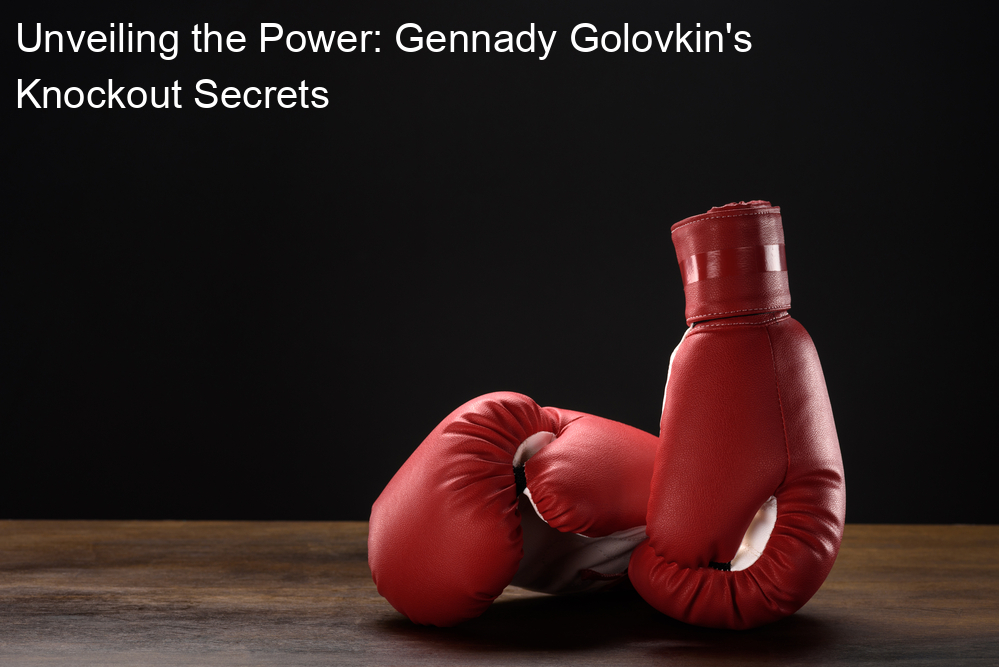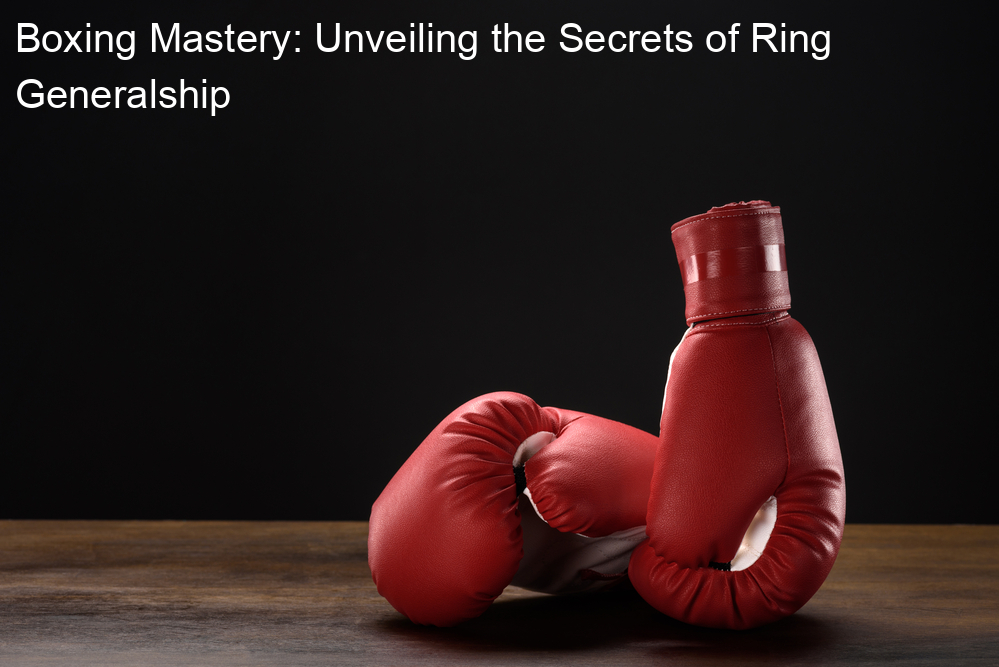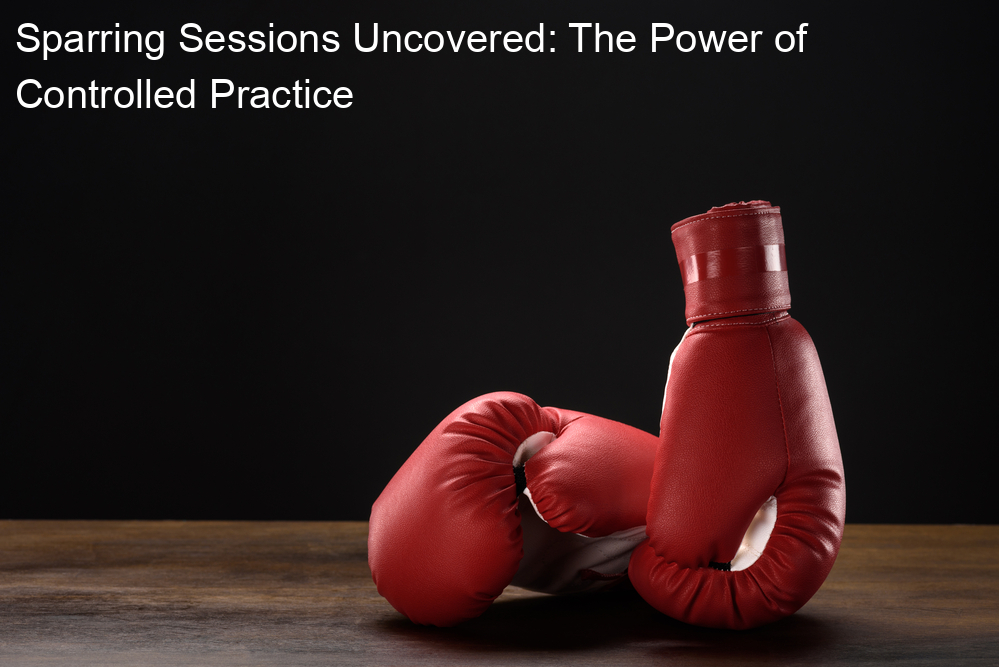As a beginner in the world of boxing, you might be feeling a mix of excitement and uneasiness. Don’t worry, that’s perfectly normal!
Boxing is a highly rewarding sport that enables physical fitness, self-discipline, and personal growth.
Like with any new skill, learning the essentials is the crucial step towards enjoying the journey and reaping its benefits.
Before jumping into the ring, you’ll need to build a solid foundation of skills and techniques.
This encompasses everything from your basic boxing stance and footwork to acquiring the right equipment and incorporating the best training practices.
As you progress, you’ll also delve into mastering advanced techniques and understanding the mental and strategic aspects of the sport.
Key Takeaways
- Build a strong foundation in boxing skills and techniques for an effective and enjoyable experience.
- Gradually progress from basic stance and footwork to advanced techniques and strategies.
- Equip yourself with proper boxing gear and prioritize physical conditioning for optimal performance.
Basic Boxing Stance
Right-Handed Stance
When I first started learning boxing, the initial technique I needed to master was the basic stance.
As a right-handed boxer, I position my left foot forward and slightly point it toward my opponent.
My right foot is placed about shoulder-width apart, positioned at a roughly 45-degree angle.
This footwork ensures that my body is well-balanced, allowing me to move and dodge effectively.
I always keep my knees slightly bent, ready for action. With my hips engaged – just a little turned to the left – I prevent exposing too much of my body to my opponent.
In terms of upper body, I keep my hands up to protect my face, chin tucked down to shield it from blows.
My left hand (jab hand) is placed slightly forward and higher than my right hand (power hand).
The elbows stay tight and close to my body, providing protection to my ribs.
Left-Handed Stance
The left-handed stance, also known as the southpaw stance, might seem like just a mirrored version of the right-handed stance, but it has its unique quirks.
As a left-handed boxer, I stand with my right foot forward, pointing it towards my opponent.
My left foot stays back about shoulder-width apart, positioned at a roughly 45-degree angle.
The footwork provides balance and support for effective movement while maintaining a strong defense.
My knees remain slightly bent, and my hips turn to the right in a profile position that limits my target area to the opponent.
To protect my face, I keep my hands up with the chin tucked down. My right hand (jab hand) stays forward and slightly higher than my left hand (power hand).
Similar to the right-handed stance, I keep my elbows tight and close to my body to protect the ribs.
By learning and perfecting these stances, I’ve built a strong foundation for my boxing journey.
They help me stay protected while I execute various offensive and defensive maneuvers.
Remember, practice is key to mastering the proper stance and becoming a skillful boxer.
Boxing Techniques
Jab
As a beginner boxer, I always remember that the jab is my go-to punch in most situations. It’s a quick, straight punch thrown with the lead hand.
To execute a jab, I extend my lead arm quickly and snap my wrist at the end of the punch.
My jab is important for setting up other punches, maintaining distance, and controlling the pace of a fight.
Cross
When I want to follow up my jab with a powerful punch, I use the cross. The cross is a straight punch thrown with my rear hand.
I pivot my back foot, rotate my hips, and extend my rear arm to generate maximum power.
To land it effectively, I make sure to maintain proper balance and aim for my opponent’s chin or body.
Hook
For me, the hook is an essential technique for targeting my opponent’s sides. It is a short, powerful punch thrown with a bent arm, usually at a 90-degree angle.
I throw the hook with either my lead or rear hand, pivoting my feet and hips to generate extra force.
My target areas for the hook are the head, particularly the temple or jaw, and the body, focusing on the ribs and liver.
Uppercut
Lastly, the uppercut is my go-to punch when I want to target my opponent’s chin or body from a close distance. This punch is thrown with a bent arm, driving upwards from my shoulders and hips.
I can throw the uppercut with either my lead or rear hand, making sure to keep my elbows close to my body for added power and protection.
In conclusion, as a beginner boxer, I focus on mastering these essential boxing techniques.
The jab, cross, hook, and uppercut are my basic punches, each serving a specific purpose and target area.
By understanding and practicing these techniques, I can improve my skills and grow as a boxer.
Defensive Techniques
As a beginner boxer, it’s crucial to learn a variety of defensive techniques in order to protect yourself from your opponent’s punches.
In this section, I will discuss three fundamental defensive techniques: slipping, rolling, and blocking.
Slipping
One of the most important defensive techniques I utilize is slipping. Slipping is the act of quickly moving my head to the side to avoid an incoming straight punch.
This allows me to evade my opponent’s attack and puts me in the perfect position to counter-attack.
To effectively slip:
- Maintain a proper stance with feet shoulder-width apart and knees slightly bent.
- Keep my hands up and my chin down at all times.
- React quickly to the attack, watching for my opponent’s cues and slipping to the side.
- Return to my original position after I have successfully dodged the punch.
Roll
Rolling is another essential defensive technique that helps me avoid hooks and uppercuts.
It involves bending my knees and moving my upper body in a semi-circular motion, allowing punches to pass over my head.
To perform a roll:
- Keep my hands up and my chin tucked in.
- Bend at the waist and knees, moving in the direction of the incoming punch.
- Make sure to stay on the balls of my feet, keeping my movement light and quick.
- Return to the starting position after the punch has passed.
Blocking
Lastly, blocking is a key defensive method that allows me to absorb the impact of my opponent’s punches.
To block effectively:
- Keep my hands up and close to my head, acting as a shield.
- Use my forearms and elbows to block body punches by bending my knees and lowering my body weight.
- Utilize my shoulders and arms to block uppercuts and hooks.
By employing these defensive techniques in my boxing training, I can minimize the damage of my opponent’s attacks while also setting myself up for effective counter-strikes.
It’s essential to practice these techniques consistently in order to improve my reaction time and overall defensive skills.
Footwork and Movement
As a beginner boxer, one of the essential skills you need to learn is footwork and movement. It helps you maintain your balance, move around the ring, and change direction when necessary.
In this section, I’ll discuss techniques for moving forward and backward while keeping your balance intact.
Moving Forward
When moving forward, it’s important to lead with the front foot to avoid crossing your feet and losing balance.
Here’s a step-by-step process:
- Slightly bend your knees and keep your weight on the balls of your feet.
- Push off with your back foot, initiating the forward motion.
- Move your front foot forward and land on the ball of your foot.
- Follow with your back foot, maintaining the same distance between your feet.
Remember to keep a comfortable distance between your feet to maintain balance and avoid getting too close to your opponent or stumbling.
Moving Backward
Retreating is equally important when you need to avoid an aggressive opponent or create some space to regather yourself.
Here’s how to move backward:
- Bending your knees slightly and staying on the balls of your feet.
- Push off with your front foot to initiate the backward motion.
- Move your back foot backward, keeping it on the ground for stability.
- Follow with your front foot, maintaining the same distance between your feet.
As you practice moving forward and backward, don’t forget to incorporate pivoting.
To pivot, shift your weight to your lead foot, then rotate your body in the desired direction, swinging your other foot around.
This allows you to change your angle and keep your opponent guessing.
By focusing on these techniques, you’ll develop strong footwork skills that allow for fluid movement and help you maintain control and balance in the ring.
Physical Conditioning
Strength Training
I find it crucial to focus on building strength as a beginner boxer. Some effective workouts that help me develop power and strength include push-ups, sit-ups, and weightlifting.
I make sure to incorporate these exercises into my training routine.
A sample workout for me might look like this:
- Push-ups: 3 sets of 15 repetitions
- Sit-ups: 3 sets of 20 repetitions
- Weightlifting: such as barbell squats, bench press, and deadlifts
Remember, it is essential to maintain proper form while doing these exercises to avoid injury.
Cardio Training
As a boxer, I need to have great endurance and speed. Developing my cardiovascular fitness is essential for this.
Cardio training helps improve my overall conditioning, allowing me to fight longer and recover more quickly. I usually do the following exercises:
- Running: I run at a moderate to high intensity for 30-45 minutes, 3-4 times a week.
- Jump rope: This exercise is excellent for building agility while working on my cardio. I try to do 5 sets of 3 minutes with 30-second breaks between each set.
Agility Training
Agility is crucial for a boxer to move fluidly in the ring.
I focus on improving my footwork and reaction times through specific agility exercises:
- Ladder drills: Using an agility ladder, I perform various footwork patterns to enhance my foot speed.
- Cone drills: I set up cones in a zigzag pattern and work on changing directions quickly while maintaining balance.
Incorporating these exercises into my training routine helps me become a well-rounded boxer with the necessary physical conditioning to excel in the ring.
Boxing Equipment
When I started boxing, one of the first things I learned was the importance of having the right equipment.
In this section, I’ll share my experience with the essential gear for beginner boxers, which includes gloves, a heavy bag, and a speed bag.
Gloves
When it comes to boxing, having a good pair of gloves is essential.
Not only do they protect my hands from injury, but they also provide the necessary support and cushioning for powerful punches.
There are different types of boxing gloves available, such as:
- Training gloves: These gloves are designed for all-around use, from sparring to bag work. I found them to be a great choice for beginners like myself.
- Sparring gloves: With added padding, these gloves are specifically designed for sparring sessions to prevent injury to both myself and my sparring partner.
- Bag gloves: These gloves have less padding than training gloves and are meant for heavy bag workouts, but I would recommend sticking to training gloves for a more versatile option.
Choosing the right size and weight of gloves is crucial, too. I made sure to consult with my gym instructor to find the appropriate size for my hands and skill level.
Heavy Bag
Having a heavy bag in the gym is vital for practicing my punches and developing power.
There are various types of heavy bags available, like:
- Standing heavy bags: These bags are great for home use and don’t require any special mounting. I find them useful for kicking drills as well.
- Hanging heavy bags: This traditional bag hangs from a chain or a mount and provides a more realistic and challenging experience as it swings and moves with my punches.
In my experience, it’s essential to focus on proper form and technique when hitting the heavy bag so I don’t develop any bad habits or risk injury.
Speed Bag
Another essential piece of boxing equipment is the speed bag.
This small, air-filled bag is mounted on a rebound platform, and its primary purpose is to improve hand-eye coordination, rhythm, and speed.
It may take some time to get used to hitting the speed bag, but I found that with consistent practice, I improved my accuracy and timing, which translated to better performance in sparring and competition.
Remember, practice makes perfect, and having the right boxing equipment can make a significant difference in your progress as a beginner.
Training and Practice
Sparring Sessions
In my experience, sparring sessions are essential for learning and improving my boxing skills. They help me know how well I can apply the techniques I’ve learned during real fights.
While sparring, it’s essential to have a coach or training partner who can provide constructive feedback.
This helps in correcting any mistakes and improving my form.
During sparring, I focus on both my offense and defense, trying different combos and practicing footwork.
It’s also crucial to maintain a balance between aggressiveness and control to avoid causing injuries.
Remember, the goal of sparring sessions is to learn and grow, not to conquer your opponent.
Shadowboxing
Shadowboxing is a crucial aspect of my boxing training routine. It allows me to practice and perfect my techniques without any external distractions.
As I shadowbox, I visualize myself in a real fight, working on my footwork, throwing various punches, and practicing efficient movement. It’s essential to focus on form and technique during shadowboxing.
I make sure to maintain a proper stance and practice the correct way of throwing punches to avoid picking up bad habits.
Furthermore, incorporating rounds and intervals into my shadowboxing routine helps build the stamina required for actual boxing matches.
Combos Practice
Combos practice is an important part of my training regimen, as it helps me develop speed, power, and precision in my punches.
I usually work on combos using a heavy bag, speed bag, or a mitts session with my coach.
For instance, here are a few basic combos I practice regularly:
- Jab-Cross: A simple but effective combo that works well for setting up further attacks.
- Jab-Cross-Hook: This combo adds a powerful hook to the mix, making it useful for exploiting an opponent’s exposed side.
- Jab-Upper: A quick and versatile combo that targets both the head and body.
As I become more proficient with these combos, I try to incorporate various head and body punches and different movement patterns to expand my repertoire.
Overall, dedicating time to sparring sessions, shadowboxing, and combos practice has tremendously improved my boxing skills.
With consistent training and focus, I believe anyone can develop the essential techniques for becoming a competent boxer.
Advanced Techniques
Counter Punching
In my experience as a boxer, mastering the art of counterpunching is crucial for advanced fighters. It involves anticipating your opponent’s attack and striking back strategically.
Timing is essential. Aim to improve your reflexes to effectively slip and move away from incoming punches, which allows me to land powerful counterattacks in response.
A few favorite counterpunches of mine include:
- The Check Hook: When an opponent comes forward with a punch, step back while pivoting and throw a hook, which catches them off guard.
- The Cross Counter: When faced with a jab, slip to the side and throw a cross with your rear hand, effectively countering your opponent’s attack.
Offensive Tactics
A well-rounded offensive game is essential for advanced boxers. I always focus on improving various boxing moves to enhance my offense.
Here are some highly effective offensive tactics I’ve found to work well:
- Body Shots: Targeting the body can slow down an opponent and break their rhythm. By mixing in combinations and alternating between head and body shots, I’ve managed to create openings for my attack.
- Feints: Feinting is a great way to keep opponents guessing and create opportunities for landing clean shots. When I use a feint, I pretend to throw a punch to gauge my opponent’s reaction or force them to make a move, subsequently exploiting their opening with a well-timed strike.
- Angles: I’ve found that changing angles during my attacks can be a game-changer. By stepping to the side and creating new angles, I can catch my opponent off guard and land cleaner, more effective punches.
As I continue to work on my boxing skills, focusing on these advanced techniques has been crucial in elevating my game.
Remember, practice makes perfect, and honing these skills sets me apart from other fighters.
Mental and Strategic Aspects
As a beginner boxer, I find it crucial to focus on the mental and strategic aspects of the sport.
Having a strong mentality is essential, as it helps me stay persistent during tough moments and keep pushing forward.
I’ve learned that managing my mental toughness not only benefits me in the ring but in daily life too.
A great example of this is Muhammad Ali, who was known for his unbreakable confidence and ability to get under his opponents’ skin.
Similarly, Floyd Mayweather had a strong mental game, allowing him to maintain a disciplined defense and strategically pick apart his opponents.
When starting out in boxing, it’s important for me to develop a basic understanding of range and coordination.
Knowing my range helps me maintain a safe distance from my opponent while still being able to land effective punches.
Taking a few tutorial classes has helped me become more comfortable with the strategic aspects of boxing.
For example, I learned how to incorporate basic kickboxing moves, like front kicks and roundhouse kicks, adding variety to my attacks.
This element of surprise can be useful in confusing opponents and keeping them guessing about what comes next.
Focusing on mental and strategic aspects is essential for any beginner boxer. Enhancing these skills can lead to improved performance in the ring and build a solid foundation for future development in the sport.
Frequently Asked Questions
How do I start training for boxing at home?
I started by finding a dedicated space to train and setting up my own mini gym. I got a heavy bag, jump rope, and gloves.
I followed online tutorials, practiced basic exercises, and shadowboxed regularly. Consistency and discipline are crucial when training at home.
What basic skills should I focus on as a beginner?
I focused on mastering the basic boxing stance, footwork, and the four fundamental punches: jab, cross, hook, and uppercut.
I also learned proper breathing techniques and how to maintain balance while moving around and executing punches.
How can I practice boxing without equipment?
I practiced boxing without equipment by shadowboxing, which involves mimicking the movements of an actual sparring round.
I also did bodyweight exercises like push-ups, sit-ups, and squats to improve my strength and conditioning.
Which boxing techniques should I learn first?
I began by learning the jab, as it is the foundation of boxing offense and defense.
Once comfortable with the jab, I moved on to learning the cross, followed by hooks, and finally uppercuts.
I also worked on footwork, head movement, and effective defense techniques.
What are some tips for sparring?
When I started sparring, I focused on keeping a safe distance from my partner, being patient, and using feints to hide my intentions.
I also practiced maintaining a strong defensive guard and prioritized technique over power.
Communication with my sparring partner was key for both learning and safety.
How long should I train each day?
I found that as a beginner, committing to 30 minutes to an hour of dedicated practice each day helped me improve steadily.
A balanced routine included warm-ups, technique drills, strength exercises, and cool-down stretches.
Remember that quality of work and listening to your body is essential to avoid overtraining and injury.

